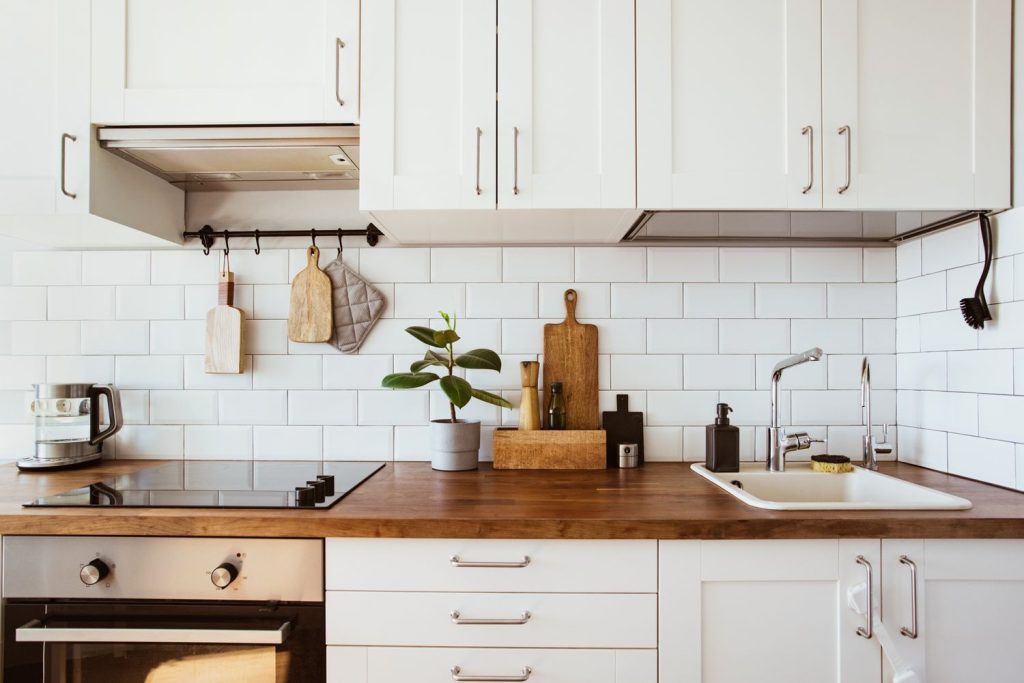Kitchen cabinets are a major investment in both function and aesthetics. They’re opened and closed multiple times a day, exposed to cooking grease, moisture, food spills, and even UV light. To preserve their beauty and functionality, regular maintenance is essential—regardless of the material or finish.
Whether you have natural wood, painted, laminate, or high-gloss cabinets, this guide outlines practical steps for maintaining your kitchen cabinetry over time.
1. Clean Cabinets Regularly
Routine cleaning prevents grease, dust, and grime from accumulating. Use a soft, damp cloth with a mild dish soap solution. Avoid harsh chemicals or abrasive sponges that can damage finishes, especially on painted or wood-stained surfaces.
For weekly maintenance:
- Wipe down cabinet fronts and handles
- Clean corners and grooves where debris builds up
- Dry surfaces immediately to prevent moisture damage
2. Protect Against Moisture
Water is one of the biggest threats to cabinet longevity. Over time, it can warp wood, bubble laminate, and weaken adhesives.
To protect your cabinets:
- Wipe up spills quickly, especially near sinks and dishwashers
- Use exhaust fans when cooking to reduce humidity
- Avoid hanging wet dishcloths over cabinet doors
3. Handle Grease and Oil Properly
Grease buildup not only dulls your cabinets’ appearance but can also damage finishes over time. In kitchens where cooking is frequent, this is a common concern.
Use a gentle degreaser or vinegar-and-water mix to clean:
- Areas above the stove or oven
- Cabinet tops near ventilation fans
- Around handles and pulls where hands often transfer oils
Avoid letting grease harden—regular light cleaning is easier than deep scrubbing later.
4. Use Hardware Carefully
Cabinet hardware—knobs, handles, and hinges—plays a big role in extending the life of your cabinets. Make sure doors and drawers open and close smoothly without slamming.
Tips to protect hardware:
- Tighten loose screws and handles as needed
- Lubricate squeaky or stiff hinges
- Avoid pulling on doors without using the handles
5. Protect Cabinets from Heat and Sunlight
Direct heat and UV rays can discolor or damage cabinet surfaces over time. Protect your cabinets by:
- Using window coverings to limit direct sunlight
- Installing heat shields near ovens or stoves
- Ensuring adequate ventilation in the kitchen
This is especially crucial for painted or high-gloss finishes, which are more prone to fading or cracking.
6. Avoid Overloading Shelves
Each cabinet shelf has a weight limit. Overloading them can cause shelves to sag or pull away from their brackets. Spread weight evenly and store heavier items in lower cabinets for stability.
Periodically inspect the inside of your cabinets for signs of strain, warping, or cracking, and reorganize if needed.
7. Refinish or Touch Up as Needed
Over time, even the best cabinets may develop minor scratches or wear. For wood cabinets, keep a matching stain or touch-up marker on hand. If scratches or dullness become noticeable, a light sanding and reapplication of finish can restore their appearance.
Conclusion
Maintaining your kitchen cabinets doesn’t require intensive labor—just a consistent routine and attention to small details. From keeping surfaces clean and dry to ensuring hinges and hardware remain functional, these simple steps protect your investment and keep your kitchen looking its best. With proper care, your cabinets—especially high-quality options like Imperial Kitchen Cabinets—will continue to serve your family beautifully and efficiently for many years to come.




